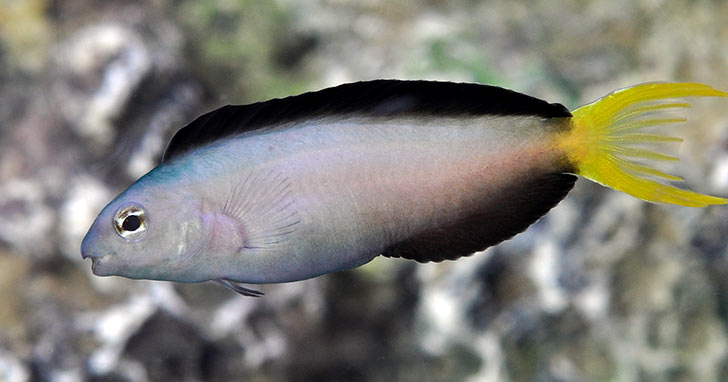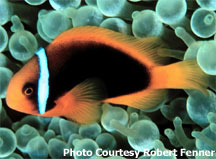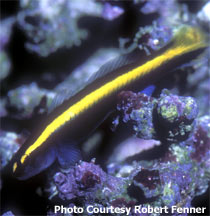By: Robert M. Fenner - Guest Author

A principal concern of many aquarists is the state of the world's environments and the possible impact their demanding hobby might have. Though no species has been "wiped out" by wild-collection on the reef, the use of boats, subsequent labor, non-human resources, nets, and other tools to get wild caught specimens to consumers isn't without consequence. As a conscientious alternative, the captive breeding of fishes and asexual fragmenting of hard and soft corals reduces environmental destruction and is by definition a more easily controlled resource.

Much like the successes made toward captive breeding in the freshwater hobby years back, progress continues apace in the field of cultured
corals and
fishes. This is good news on several fronts: captive-produced animals relieve pressure on wild populations and their environment, they lack infectious and parasitic disease, they're much more likely to adapt to captive conditions, and are notably less aggressive than ones collected in the wild. Let's expand on the specific issues that define the many benefits of "home-grown" saltwater species.
Benefits of Aquacultured Specimens
Over Wild-Collected
- Captive bred specimens acclimate better to home aquariums
Wild specimens of marine life have a great deal more to contend with than their aquacultured kin. The effects of bad weather, strong currents, predators, availability of food… are more extreme in nature than in our aquariums. Many wild-collected fishes have a hard time adjusting to living in a limited volume, clear-sided container… some unfortunate ones actually damage themselves by repeatedly striking the sides. Marine fishes that have been bred and reared in captivity have none of these problems. They are raised within the familiar limits of their surroundings, and acclimate easily to home aquariums.
- Reduced Aggression
A very real source of mortality in marine specimens is overt antagonistic behavior. Saltwater environments are socially very challenging. For the most part, it is characterized by near constant "fight or flight" behavior on the part of fishes and stinging and poisoning events amongst sedentary stinging-celled animals like corals. Wild corals are accustomed to vigorous competition for space and light and have evolved strong stinging and potent poisoning strategies for staking out their living area. Captive-produced specimens have proven much more facile and tolerant toward neighboring sedentary invertebrates. Aquarium settings, by virtue of their calmer, less competitive nature, result in animals "getting along" better than ones in the wild, with much lower rates of death due to aggression.

- Tank-Raised Fish are easier to feed
An important factor in the selection and purchase of new fish is whether it is eating or not, particularly the types of foods you intend to offer. Very often, particularly with very young/small and larger/older specimens of marine fishes, food acceptance is a critical issue. Many species just outright refuse all types of foods. This is a striking difference between captive-produced and wild-collected specimens. As a result of being fed
prepared foods and cultures throughout their lives, aquacultured marine specimens are aware of novel types and formats, even going to the surface to feed (which does NOT occur in the wild).
- Lower risk of introducing pathogens to your reef aquarium
Obviously, aquacultured specimens are not exposed to the many and varied parasites and infectious disease agents as their counter parts are in the wild. Many of the marine specimens that are lost are "anomalous," that is of unknown or uncertain origins… often traceable to internal disease challenges. Populations that have "closed the loop," offspring of captive-produced parentage, are "specific pathogen free." These specimens should still be carefully
acclimated and possibly quarantined just the same, but more to give them a chance to "rest up" before being placed in a main/display tank rather than waiting to see if signs of biological disease develop.
- Easier to culture for beginners
If you're interested in culturing a species, it is far easier to utilize captive-produced specimens for its generation. For all the above stated reasons, this broodstock is more stable, healthy and likely to survive the rigors of breeding, rearing in the case of fishes or cutting/fragmenting with corals.
Recent Captive Breeding Successes
Though most
Clownfishes, Neon
Gobies, and
Dottybacks are aquacultured for the ornamental trade, we are still unable to reproduce many marine fish species at this point in time. More and more hard and soft corals come from fragmentation processes, as individuals and companies physically separate larger colonies into smaller pieces and "grow them out" for resale. I suspect that about half of all specimens sold nowadays are currently captive-produced, and expect this percentage to grow. |
|
When you can, buy aquacultured specimens. This makes sense for you, your aquarium, and the environment. Captive fishes and corals are hardier, disease-free, less antagonistic, more accepting of prepared foods, and generally far more likely to thrive in your care.
As time goes by, we will overcome hurdles, particularly the feeding protocols of juvenile forms, and be able to successfully culture all species. We will then find more and more aquacultured species becoming available as a viable alternative to wild-caught specimens. Who knows - you may well be responsible for contributing to this trend through your own efforts!
Biography
Robert M. Fenner is a marine scientist and lifelong aquarist, with an active and continuing involvement in the academic, journalistic, trade, and hobbyist sides of aquarium keeping. Published works include several studies on aquatic biological and chemical questions, and an extensive publishing and photographic background in the industry and hobby of aquatics. The author of
The Conscientious Marine Aquarist, Fenner is also a regular contributor to a number of aquarium publications, including Freshwater and Marine Aquarium, Tropical Fish Hobbyist, SeaScope, Pet Dealer, and several foreign hobbyist and business periodicals. He is a former marine science and aquariology instructor at the University of California and in the California State University system.
|





